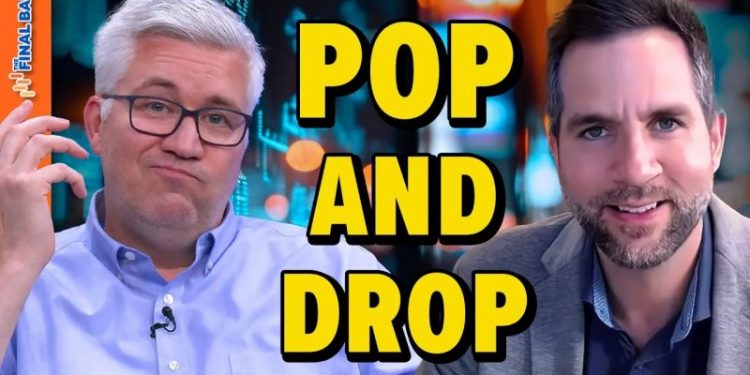Market Pops, Then Drops on Fed Day
The Federal Reserve’s decisions have always been a significant driver of market movements, and the phenomenon of markets experiencing a surge followed by a decline on Fed days has become a common occurrence. Investors and analysts closely analyze the Federal Reserve’s policy statements, interest rate decisions, and economic outlook to gauge the direction of financial markets. When the Federal Reserve makes announcements, it can trigger immediate reactions in the market due to the uncertainty surrounding their decisions and the implications for the economy.
On Fed days, the market often experiences an initial pop or surge in response to the Federal Reserve’s announcements. This pop can be attributed to market participants reacting to the news and adjusting their positions based on the information provided. If the Federal Reserve decides to cut interest rates, for example, this could lead to a surge in stock prices as investors anticipate lower borrowing costs and increased economic activity. Similarly, if the Federal Reserve indicates a dovish stance on monetary policy, market participants may interpret this as a positive signal for economic growth, leading to a market rally.
However, the initial pop in the market is often short-lived, and markets can quickly reverse course and experience a drop following the Fed’s announcements. This reversal can occur due to a variety of factors, including profit-taking by investors who had bought into the initial surge, concerns about the implications of the Federal Reserve’s decisions on inflation and economic growth, or uncertainty about future monetary policy actions.
In some cases, the drop in the market following a Fed day can be more pronounced than the initial pop, leading to heightened volatility in financial markets. Traders and investors need to exercise caution and be prepared for sudden shifts in market sentiment on these days, as the combination of uncertainty and rapid market movements can create additional risks for market participants.
It is essential for investors to have a sound risk management strategy in place to navigate the volatility that often accompanies Fed days. This may include setting stop-loss orders, diversifying investment portfolios, and staying informed about the latest economic data and market developments. By being proactive and prepared, investors can better position themselves to manage the risks and opportunities that arise from market pops and drops on Fed days.
In conclusion, market pops followed by drops on Fed days have become a familiar pattern in financial markets. While the initial surge in response to the Federal Reserve’s announcements may create opportunities for traders and investors, it is crucial to be mindful of the potential for market reversals and increased volatility. By understanding the factors driving market movements on Fed days and implementing effective risk management strategies, investors can navigate these events successfully and make informed decisions in a rapidly changing market environment.

















